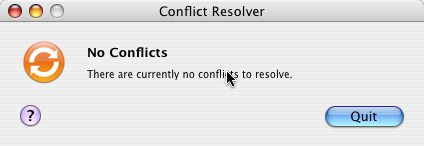Yesterday I had to install some maps onto my Garmin iQue 3600 for a trip back east. I had everything installed on my Windows machine, but wanted to put it in VMWare on my Mac so I could finally get rid of the Windows machine. I downloaded all the installers from the web and tried to install, but kept getting an error message that it couldn’t connect to installengine.com to download some component. After searching and futzing for several hours, I finally gave up and installed from the original CD which worked fine. I then did all the upgrades and live was fine. For some stupid reason, InstallShield (one of the most popular installer technologies for Windows), has the install engine separate from the installer. While this sounds like a great idea so that the engine can be installed separately, it isn’t if you’re dealing with an installer that is several years old. Apple’s Installer on Mac OS X does something similar, but the difference is backwards compatibility and the engine is built into the OS. Why is everything so much harder on Windows? Is it simply that I’m not familiar with it or does it really suck?
Compounding my frustration, I went to wipe down the Windows machine to give to my father and when I went to reinstall the OS, I couldn’t figure out how to install the drivers. The OS (Windows XP) installed fine, just all the drivers didn’t want to install. I ended up just making it my father’s problem and gave him all the CDs and said good luck. All the drivers were on the CD, but I had to pick and choose which ones I needed. On the Mac, you insert the CD/DVD and install the OS. Granted you need drivers for scanners and other 3rd party stuff, but not for networking or the video like there is on my Dell machine.
